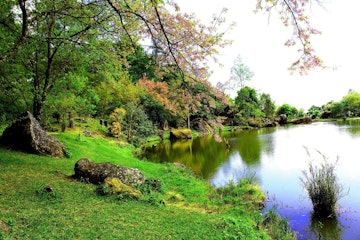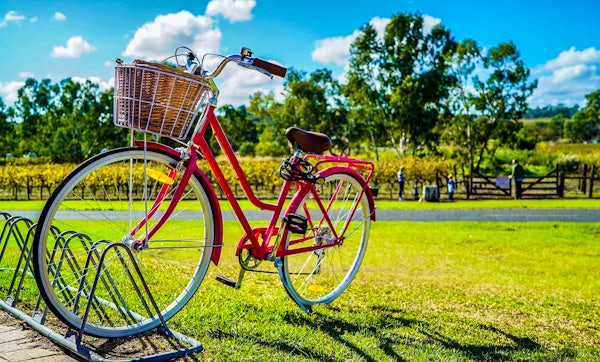When you read or hear about carbon footprint, do you actually know what this means? A carbon footprint is the total amount of greenhouse gases measured in metric tons of equivalent CO2 produced due to our human activities, which is especially damaging to our environment. These activities produce around 40 billion metric tons of carbon dioxide into the atmosphere in a year. To say that this level of carbon produced is alarming, which is causing many climate changes, would be an understatement.
In other words, your carbon footprint actually represents the equivalent number of greenhouse gas emissions caused by your own personal activities. Given that we all share the same environment which is affected by these changes, we have a responsibility to do something before it is too late. Luckily, there are small, simple but meaningful steps every one of us can do to reduce our individual carbon effect. If you would like to start reducing your carbon footprint, but don’t know where to start, here are some of the easiest ways we can all reduce our carbon footprint quickly and efficiently.
- Cut Down on Your Meat
We are not here to tell you to stop eating meat if you are a meat lover. However, we will emphasize that cutting down on your meat consumption can do great things for our environment. Meat production is a substantial cause of greenhouse gas emissions, which is a major problem for the climate today. This is why reducing the individual consumption of meat can significantly reduce the carbon footprint as well. Instead of meat intake, whenever possible, try to choose organic and local foods that are fresh, healthy and in season. Both your body and environment will feel the change very soon.
- Walk it off
Next time you decide to take your car where the distance is walkable, stop and think whether this is actually a great opportunity to go for a walk. Not only is it great for your health, it also benefits your wallet as well as the environment. We are all aware of the fact that traffic increases CO2 emissions drastically, so to put it simply, choose to go for a walk, take a bike, train or public transportation, and leave your car at home.

It is actually becoming a more common practice today, especially in bigger cities, where the traffic congestion is causing many to grab their bicycles and take that mode of transportation - sometimes even faster! Apart from this, many cities offer eco-friendly alternatives such as hybrids, solar power, etc. Check what options are available in your town and give your car the necessary rest so you can enjoy a beautiful walk or a bike ride through the town.
- New clothes do not make you cool
Nowadays, we are all fans of “fast fashion”, replacing our still useful clothes and unnecessarily buying new ones. It is a vicious cycle which we can stop with one simple decision. Fashion might be appealing, but it is also easily disposable. Think twice before throwing away that sweater you have only worn twice.
Clothing that’s made overseas goes through a vigorous process in order to make its way to you, whether that be local or international. The journey itself plays a rather large part on the carbon footprint it leaves behind. In terms of “fast fashion”, the idea behind that is to rapidly produce items that appeal to the market which, as a result, leads to the rapid increase of clothing making its way to landfill. Moreover, certain types of material, such as cotton, can be very toxic to the environment and our health. If you are buying new clothes, try to buy those that are marked as “organic”, taking into consideration both your health and the health of your environment.
- Make it green
Have you ever thought of making your life a little bit greener, literally? Even if you live in an apartment instead of a house, you can decorate your home by planting some plants in a way that decreases your carbon footprint. This is especially beneficial if you are living in a bigger city. If you have a house, then grab your gloves! There is so much opportunity and potential to create your own flower bed, spruce up your balcony or even start your own vegetable garden to create a more environmentally friendly home environment. Think about all the great organic produce you can have right from your very own home.
- Save energy in your own home
It might come as news to you, but every now and then you can actually do a revision of the energy consumption in your own home. This helps you realize how much energy you are actually using and you can then determine the way you can become more energy efficient. Even before you do the revision, there are some things you can start doing now. Change the light bulbs you are using with light emitting diodes (LEDs). You might find it that LEDs cost more, but you are actually saving money in the end. How, you might wonder? They use only a quarter of the energy normal light bulbs use and therefore last up to 25 times longer.
- Dry your clothes naturally
By deciding to dry your clothes naturally, instead of using the dryer, you are having a major positive impact in reducing your carbon footprint. This is not a joke at all! If you thought washing your clothes uses a lot of energy, than you will be surprised to hear that your dyer uses five times more electricity than washing. Not only does that negatively impact the environment, it’s even more of a reason to let your dryer rest for a while, wouldn't you agree?

- Conserve water
Reducing your water usage is also crucial in our fight against the carbon footprint. Be sure to remember this next time you are brushing your teeth so you can shut off the water whilst in the process. There is really no need in leaving it running all the time. Another useful piece of advice is to not flush things down the toilet to dispose of them. One flush only can waste up to 20 litres of water!
If you are already aware of these things and want to go a step further, avoid using your usual body wash products. Their ingredients go down the drain and only further pollute our waterways. Instead, make an eco-conscious decision and switch to natural and eco-friendly soaps which can easily be found today. If this is also something you often buy, you can take your habits to the expert level and start making your own products. There are many fast and budget friendly recipes online on how to make natural and organic products which are especially beneficial for your environment.
- Follow the 3R’S (Reduce - reuse - recycle)
If we remember that most of our waste ends up in landfills, which are inexhaustible sources of greenhouse gases and pollution, then cutting down on our waste by following the reduce, reuse, recycle principle is more than necessary. Try to reduce your purchases, be more mindful when going shopping and chose to buy only what you need. This is how you will have mastered the first R. With your clothes, find a way to prolong the life of your items by repairing them and reusing them, and in that way, keeping them from the landfill longer. Doing this, you will become a master of the second R. Finally, properly recycle any plastic, paper, glass or metal that you can no longer reuse or refuse in the first place. By now, you will know all three principles and be able to practice them in your every day. What’s more, after mastering all three steps, you can easily calculate the reduction of your carbon footprint. How, you ask?
- Calculate your carbon footprint
Once we have decided to follow the 3Rs, we can directly see the impact our actions and choices have on our environment. As soon as we transmit these choices into numbers, the situation becomes more real and in a quantifiable way. In order to know how to reduce our carbon footprint, it is good to know how much carbon we are actually creating.
This is why we can easily calculate our carbon footprint using an online carbon calculator. By doing so, we can actually find out which changes we have to make to reduce this, very often, high number. Once we start making these changes, it is good to keep tracking our progress and checking whether our carbon footprint has reduced to some extent. By setting a goal of our desired carbon footprint, we can have more motivation to achieve more significant changes.

An amazing thing with all of the suggested changes is that anyone can start doing them and at any point in their life. Apart from this, despite the misconceptions, they are extremely easy to do and they create an immediate effect in reducing the harmful carbon footprint we are being so often warned about in the media.
The actions we make today make a huge difference for the world tomorrow, so let’s never be too irresponsible to forget to take care of the one and only place in which we all live.
